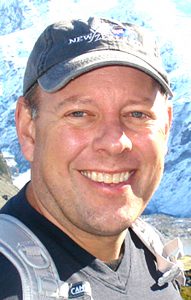
Courtesy EDC Warren County
By Jim Siplon
Being optimistic about our future, economic or otherwise, seems almost a courageous act at the moment. The seemingly ongoing stretch of natural disasters, economic and geopolitical shocks have given us all pause as we look to an uncertain future. At times like these, we find both solace and confidence for our region…by looking back. Back to a rich heritage of ingenuity, adaptability and a keen understanding of how where we live yields a unique set of advantages associated with this marvelous region. The heritage that birthed a thriving timber and paper sector, a wide variety of manufacturers and a new industry making medical devices. This place had always been somewhere good ideas came to life.
A couple of years ago, I began a deep dive into our areas economic history, with help from a number of likeminded leaders. We researched media and press coverage as well as public records and data, some of it going back to the days of our country’s founding. After amassing this enormous amount of information, we began sifting through it looking for discernible trends, time periods and shifting economic sectors…it was a sometimes overwhelming task.
Some things were evident almost immediately. The role of place was clear from the earliest days of our area with a distinct desire for those who lived elsewhere, primarily New York City but far and wide as well, to come here to enjoy the majesty of Lake George, the Adirondacks and the surrounds. What we now see as tourism was the first great driving force in our economy, sometimes being the majority of economic activity and always at least a third of the overall economic landscape. This is, both chronologically and logically, the first pillar of our areas economy and today represents between 25 and 35% of most objectives measures including employment and revenues. It has been present as along as we have been a place and is also uniquely resilient to automation and AI. It will always be in demand.
The rest of the data was less obvious. The way industries and sectors were identified and tracked changed over time, making direct comparisons harder. The data began to get consistent in the 1980s and has been tracking more than 20 distinct categories of activity with varying levels of impact. After building countless charts with 20-30 bars and hard to discern trends, we took a different take on the work. By looking at where the dollars were coming from, we started to see some clarity.
Tourism, and the associated taxes and revenues, are primarily fed by money from outside our area-“other peoples” money. The next third was public dollars, or at least those areas that were primarily publicly funded. Nationwide, healthcare is typically 1/6 employees of our overall national workforce and 15-20% of our nations GDP. In our region, it’s even higher. By combining healthcare with municipalities, schools and not for profits we found this often overlooked aggregation to be 30-40% of our areas economic output…the middle third of our economy. The strength of this backstopped sector was especially evident during COVID when healthcare and public functions created the floor in a time of crisis. Our impressive array of associated assets includes Glens Falls Hospital (the largest employer north of Albany) , Hudson Headwaters, a wide swath of medical entities, SUNY Adirondack, unique not for profits and arts organizations. This sector is also relatively resilient to the effects of automation and AI, perhaps less than tourism but still robust as the want ads will attest. Together with tourism, we had been able to find 70% of our economy.
The last third urns out to be… everything else. This was somewhat surprising. More than 20 distinct labor and economic sectors combine to be a total of 30% of our areas economy. Manufacturing, mining, professional services, banking, retail, etc…there’s a lot of different areas. This collection of areas is less robust against the ongoing march of automation and AI. This means we have to help the many unique companies and sectors navigate these times while also exploring areas not tourism or healthcare related to grow. Suffice to say our entrepreneurial heritage will be called on here. I fact, better understanding and supporting the entrepreneurial ecosystem is one of our key areas of focus. Continuing to advocate and build on our heritage of natural resource (think fresh water) as its own promising channel of economic development represents another unique opportunity that builds on both our history and special place.
Making sense of all of this data and charting a course we can be optimistic about is our focus in 2025. We are looking forward to sharing this audiences, groups, schools and companies across our region so they can help us find the best way forward. Our history tells us we will prevail…we are excited to get at it and bring the next chapter of prosperity to our community.
